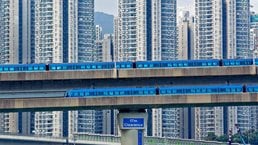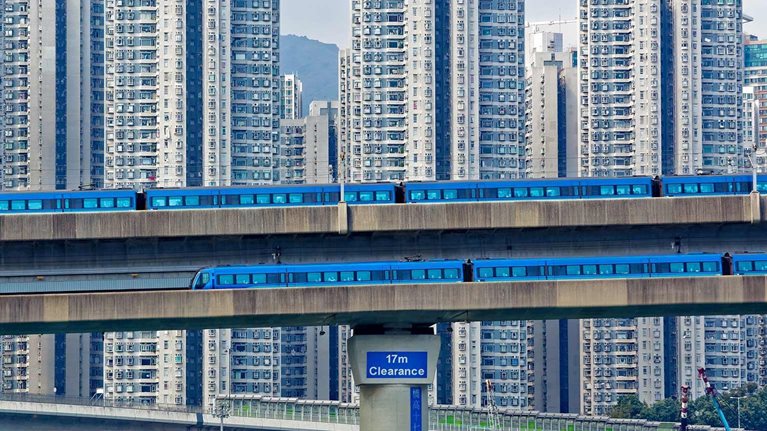Joaquim Vieira Ferreira Levy, a former finance minister of Brazil, is the chief financial officer and managing director of the World Bank Group. He spoke with McKinsey’s Simon London during the 2015 Global Infrastructure Initiative conference on how to encourage the flow of capital to infrastructure projects.
McKinsey: What factors need to be in place to attract capital for big infrastructure projects?
Joaquim Levy: Over the past 20 years, according to the World Bank Group, Brazil was the country that received the most private investment for infrastructure among emerging markets. Most of Brazil’s infrastructure is already run by the private sector—from ports to airports, roads, water, energy, and telecommunications. The Brazilian experience is that a major factor for getting things done right is to have consultations when you do a project, so that people build trust in the process. This is very important because often there are social risks and environmental risks, even in good projects. Interacting with people from all walks of life reduces the overall risk of complex projects. Openness is also crucial in the engineering phase. In Brazil, the government wants to improve the mechanisms to solicit inputs from the design community, with a view to get better, more innovative projects.
McKinsey: Are you saying that it reduces risk to spend time up front on consultation?
Levy: It does make a difference. Brazil is going to rely more on capital markets as a way to harness savings from domestic and global institutional investors. When you issue a security, a high level of disclosure is required. You have to show the market a good cost-benefit analysis. You have to get good engineering. You have to show that you addressed the concerns of stakeholders. It’s more open than when you just deal with a few banks. Relying on capital markets for infrastructure finance is a global challenge—and a global opportunity. The good thing about Brazil is that the country is large and diverse, so anything that works there can be an example for other countries. This is why Brazil has partnerships with the World Bank and other institutions to develop new financing instruments to make it easier for the fixed-income investment community to finance infrastructure. That can have big repercussions in other places.
McKinsey: What else do you consider as important to trigger the interest of global capital markets?
Levy: It is worth taking a step-by-step approach when you are developing new financial instruments. For instance, Brazil has a multibillion-dollar investment plan for logistics, mostly roads, ports, and airports. Many of these projects are brownfields, such as the replacement of a road. Because a road already exists, the government knows the economic activity around it, the traffic, and the potential profitability of replacing it. And it has the building licenses. That makes these brownfields relatively low-risk projects, making them a good way to pilot a new type of financing. That is exactly what the country is trying to do by starting a program of project bonds with specific guarantees with these investments. You get an enhanced bond that fits well with the risk profile of the infrastructure to be financed.

Voices on Infrastructure, Number 3
McKinsey: What areas have potential for private investment?
Levy: Almost any infrastructure segment can benefit from private investment. Up to ten years ago, Brazil had very little investment in sanitation. Sanitation is not glamorous, and it’s a lot of work. And the public sector was cash strapped. Then the government created a reasonable regulatory environment, and more towns started to use the private sector to provide water treatment and sewage in the past four or five years. In this case, where the social side is very important, the secret is to also be mindful of affordability. What you provide and the type of contract adopted have to match people’s ability to pay for the service. In Brazil, this has been considered in most cases, and people have been ready to pay for reliable service.
McKinsey: Do public-private partnerships (PPPs) have a role?
Levy: Yes, especially when a pure cost-recovery scheme is not affordable. However, it has to be done right. In some countries, people jumped into PPPs and were later disappointed, because they realized that, “Well, it’s not free. The government will have to pay part of the cost.” In Brazil, the government made it clear that the public sector had a financial responsibility. There, PPPs are an on-balance-sheet operation with clear limits on commitments of the public sector. PPPs can be a powerful tool to provide affordable and efficient solutions if done with transparency from the outset.
McKinsey: Are you optimistic about infrastructure-backed securities?
Levy: I believe there is a strong potential demand for infrastructure bonds. If projects are bankable, they can ensure an income stream that does not fully depend on the government. Of course, any income depends on the overall macro conditions, but project bonds are not just backed by government taxes aimed at financing public expenditure. With infrastructure bonds, you’re putting your money on something that will expand productive capacity and generate new income streams. So, it’s a smart way to invest money. The beauty of infrastructure is that in the short term, it creates demand, because it generates jobs in the construction sector, and in the medium term it also creates new supply. It expands potential output, which is the way to sustain increases in jobs and income, especially in countries like Brazil.
McKinsey: Are private sources of finance, in a sense, under-remunerated for the benefits that the projects create? They’re creating a lot of positive externalities, which aren’t necessarily reflected in their returns.
Levy: Opportunities exist for those who have to manage resources to diversify away from just government bonds, which are paying very low interest and may have fiscal risks in the future. With project bonds, you have real assets backing your income stream. Therefore, when you look at remuneration, you should think not only about externalities for those benefiting from the infrastructure but also about the diversification obtained by investors.

The ‘Rail plus Property’ model: Hong Kong’s successful self-financing formula
McKinsey: In an era of low and even negative interest rates, it seems strange that there hasn’t been more institutional money going into infrastructure. Is it that there are impediments, in the form of regulations, for example, to the flow of money?
Levy: It can be a bit puzzling, indeed. In any case, when you look back over the past 150 years, there have been two leading ways to finance infrastructure—government funds and capital markets. Capital markets are the natural way to get long-term finance, and this is what project bonds can do for institutional investors. But you may have regulatory restrictions, such as ceilings in the share of these bonds in one’s portfolio or stringent liquidity requirements for those carrying project bonds. It is something to be explored.
In this respect, Brazil has recently changed some of the regulations for the insurance companies and the pension-fund system, allowing them to have a larger share of their investments in infrastructure bonds. However, a government cannot look at financial regulations only. It also has to be conscious of the limits on the risk appetite of institutional investors. A fixed-income investor will require a significant degree of predictability surrounding any investment, independent of the guarantees or enhancements a project bond may have. And governments have to find ways to address that.
This is particularly critical for democratic countries. In some countries, you can talk to a few officials and get a project going with lots of guarantees. You bring the money, and you’re happy—or sometimes, not so happy. In countries like Brazil, it’s different. There are many actors. So to build a project that is bankable can be complicated. Governments are now focusing on this, ensuring that that licensing will come at the right time, and working with different stakeholders to get a level of risk that is compatible with investors’ expectations.
This is important, because a word that you hear a lot in the institutional-investment and asset-management communities is, “de-risking.” You may get this by burdening the public sector with all sort of guarantees, or you can reduce the risk of the project itself by improving the operating environment. I am convinced that a major role for the public sector in infrastructure is to coordinate the large number of actors that are needed to move big projects, including agencies, financial regulators, and others. This means providing not only a vision but also a healthy environment. This has to be the priority.
McKinsey: Are there practical ways to do this?
Levy: Let’s look at energy, which in Brazil has a large degree of participation from private investors. Wind power has had great success in the past few years. And why is that? Because wind power is an activity based mostly in fixed costs. The wind is free. So the key was the ability to provide a long-term contract to support the investment in building the units. Brazil has developed a mechanism to consolidate the demand forecast produced by private distributors and organize the supply of new capacity through structured auctions where producers can bid for long-term contracts. So, investors can manage their main risk. With this mechanism, Brazil has attracted many private investors, who built ten gigawatts in capacity in just a few years. That created a completely new industry and has transformed the way some regions in Brazil get their electricity. The challenge now is to extend these kinds of opportunities to a broader range of long-term private investors.


